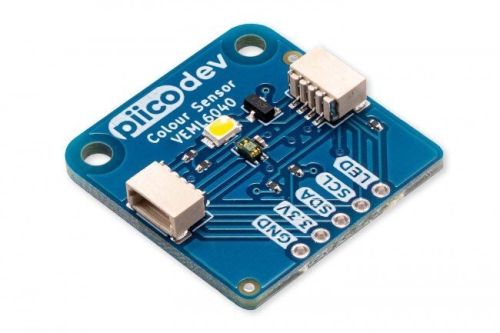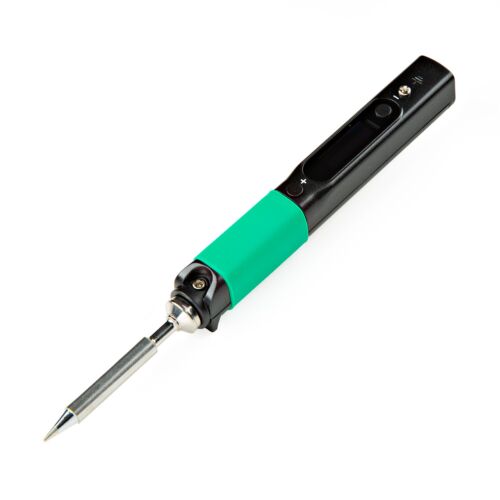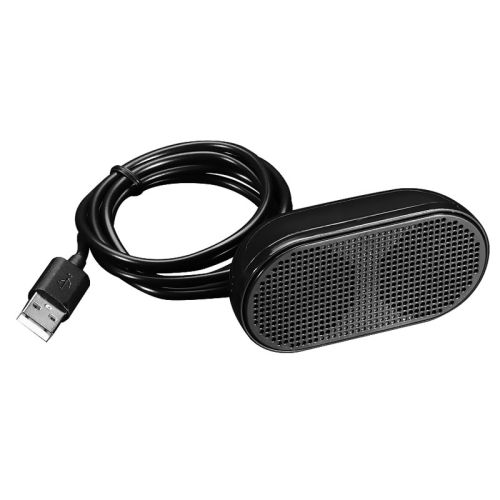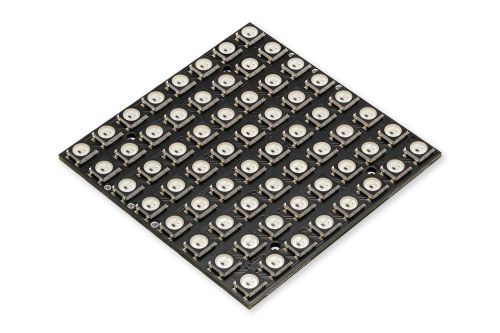Enhance your littleBits projects with a variety of input modules, from sensors to actuators, making interaction and control a breeze.
- littleBits Micro SequencerSKU: LBH839 Brand: LittleBitsThe micro sequencer sends out voltages based on the position of each of the four “step” knobs. Connect it to an oscillator and it will step through the "sequence" consecutively to make a melody (The LEDs tell you which step is active). Turn a knob all the way counter-clockwise to make the step silent. Use it in "speed" mode to set the speed using the dial, or flip the switch to “step” mode to use an input module like a pulse or button for control. In addition to its main output, it also has a trigger output, which you can send to any of your other Bits modules.$52.48 AUD, inc GSTAs low as $48.81 AUD, inc GST
Out of Stock
Sign up to get notified when it's available to order.
- littleBits DelaySKU: LBH088 Brand: LittleBitsThe littleBits delay module takes incoming audio and repeats it, like an echo. It has two knobs: "time", which sets the delay length between a sound and its repetition, and "feedback", which controls how many times the sound repeats. Delays can be long and spacey, like shouting into the Grand Canyon, or loud and crazy. This Bits module will play forever if you turn up the Feedback knob all the way. [You can also shift the pitch of a sound by turning the "time" control while a sound is repeating.]
- littleBits MixSKU: LBH089 Brand: LittleBitsThe littleBits mix module allows you to combine two inputs and send them to a single output. It also has a volume control for each of its inputs -- that's where the 'mixing' comes in. Use it to play two oscillators on a single speaker!
- littleBits RandomSKU: LBH087 Brand: LittleBitsThe littleBits random module has two modes: "noise" and "random voltage". In "noise" mode, it outputs white noise, like a television set not tuned to any channel. In "random voltage" mode, it outputs random voltage signals that can control oscillators and make them play random pitches. Use the "trigger out" connector and "speed" dial of the micro sequencer to set the timing of the random output pulses and use an input Bits module like a dimmer to control the range of your random outputs.
- littleBits KeyboardSKU: LBH085 Brand: LittleBitsThe keyboard lets you play melodies- it features 13 switches that make up an entire octave of notes. It has two modes: "press" (which only produces output when you press a switch) and "hold" (which will hold the last note you played). It also features an octave control which changes the playable range. In addition to its main output, which is great for controlling littleBits oscillators, it also has a "trigger out", which you can send to the "trigger in" of envelope or other littleBits modules.
- littleBits Toggle SwitchSKU: LBH801 Brand: LittleBitsThe toggle switch Bit is sturdy on/off switch that you can use to activate your creations with a nice, solid click. Try using it after a USB power Bit as an on/off switch for your whole creation.
- littleBits DimmerSKU: LBH834 Brand: LittleBitsOur dimmer Bit lets you control your creations with a simple knob. Turn it clockwise to send more signal to the following Bits. Try using it to control how much your vibration motor is buzzing and bouncing around.
- littleBits Light SensorSKU: LBH082 Brand: LittleBitsThe light sensor Bit can turn your circuit on and off by detecting the brightness or darkness of the environment they are in. control your circuit's with light! The amount of light shining on the sensor will change how your circuit behaves. It's a great way to activate your circuit, and is perfect for alarms!
- littleBits Motion TriggerSKU: LBH809 Brand: LittleBitsThe motion trigger is similar to the sensor on an automatic door: when someone is moving nearby, it sends an ON signal to the following Bits. It's very sensitive, so don't breathe unless you want to be detected! Try it with some LEDs to create a security light!
- littleBits Pressure SensorSKU: LBH060 Brand: LittleBitsThe pressure sensor is a touch-activated module; give its pad a little squeeze to activate it. The more pressure you apply, the more signal it sends out. Put it in front of a vibration motor to control how much it shakes!
- littleBits Roller SwitchSKU: LBH810 Brand: LittleBitsThe roller switch is a handy Bit -- it has a little lever with a wheel, and activates when something moves past it. You can also flip the mode switch to make it turn off when the lever is pushed in. Try that mode with an LED to make a fridge light.
- littleBits Slide SwitchSKU: LBH800 Brand: LittleBitsThe slide switch is a small and convenient way to turn your creations on and off. It uses a sturdy plastic lever to switch back and forth. Try it with any of your favorite Bits, like the DC motor or bright LED!Special Price $21.19 AUD, inc GSTRegular Price $24.93 AUD, inc GSTDelivered by Jan 12th
- littleBits Sound TriggerSKU: LBH811 Brand: LittleBitsThe sound trigger listens to the noise level in your room, and sends an ON signal when it gets over a certain level. You can make that threshold louder or softer using the included screwdriver. We like to use it with an LED to light up your room when you snap your fingers.
- littleBits Temperature SensorSKU: LBH842 Brand: LittleBitsThe temperatures sensor responds to the temperature surrounding its probe. The higher the temperature it senses, the more signal it sends out.
- littleBits MP3 PlayerSKU: LBH099 Brand: LittleBitsThis mp3 Player allows you to play your very own mp3 files using littleBits.
- littleBits ButtonSKU: LBH802 Brand: LittleBitsThe button Bit is a classic: big, round and springy for comfortable pressing!
- littleBits PulseSKU: LBH807 Brand: LittleBitsThe pulse Bit is like an electronic heartbeat. It sends out a stream of short ON signals, and you can make the speed of the pulses faster or slower using the included screwdriver. It's great for making LEDs blink!
- Special Price $22.09 AUD, inc GSTRegular Price $25.99 AUD, inc GSTDelivered by Jan 12th
- littleBits FilterSKU: LBH835 Brand: LittleBitsThe filter has the most effect on the sound’s character or “timbre”. It affects the timbre by changing the relative volume of certain frequencies in the sound. Use it to give the impression that a sound is “brighter" (more high frequencies) or “darker” (more low frequencies.)Special Price $32.34 AUD, inc GSTRegular Price $38.05 AUD, inc GSTDelivered by Jan 12th
- littleBits EnvelopeSKU: LBH836 Brand: LittleBitsThe envelope modifies the loudness contour of a sound. It takes a sound input and shapes it into something you'd hear from an acoustic musical instrument, like a piano or saxophone.$42.05 AUD, inc GSTAs low as $39.11 AUD, inc GST
Out of Stock
Sign up to get notified when it's available to order.
- littleBits Proximity SensorSKU: CE06058 Brand: LittleBitsThe proximity sensor Bit senses objects in front of it. It can sense if an object is far or near. Try using it to create your own self-navigating car, or a hands-free instrument!
- littleBits AccelerometerSKU: CE06059 Brand: LittleBitsUse this Bit to control your circuits with movement. The accelerometer senses how quickly you speed it up or slow it down. Snap it to a bargraph on a mounting board. Then give it a wave to visualize your movements.
- littleBits Remote TriggerSKU: LBH803 Brand: LittleBitsThe remote trigger lets you use a common remote control with your modules. Make your littleBits circuit and point your remote control at the remote trigger’s sensor. Then, press any button on your remote control to activate the module. The remote trigger will work with almost any button on a remote that uses infrared light to send signals.
- littleBits OscillatorSKU: LBH086 Brand: LittleBitsThe oscillator is the main sound source in the Synth Kit and is capable of creating audio tones that will be used in almost every sound experiment you create. It features a "pitch" knob to adjust its output tone and a "tune" dial for adjusting the tuning when using with the keyboard. It also features a mode switch that selects between "square" and "saw" waveforms. The "square" waveform has a rich, powerful character, and the "saw" waveform has a more mellow, rounder character. [You'll often use it after the Keyboard or Micro Sequencer Bits modules, but you can have lots of fun by just twisting the pitch knob and "sweeping" through all the frequencies from high to low pitches.]
- littleBits Slide DimmerSKU: LBH830 Brand: LittleBitsYou control the slide dimmer Bit by moving its lever from one end of the Bit to the other. It functions just like a light dimmer you might find at home, or a volume fader in a recording studio. Follow it with an LED for some adjustable mood lighting.
Featured Products
View AllMakers love reviews as much as you do, please follow this link to review the products you have purchased.































